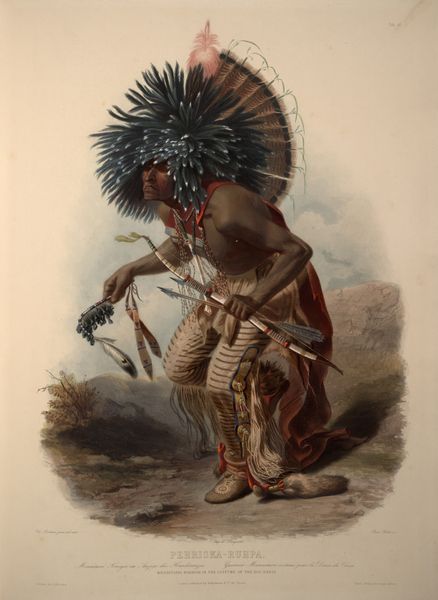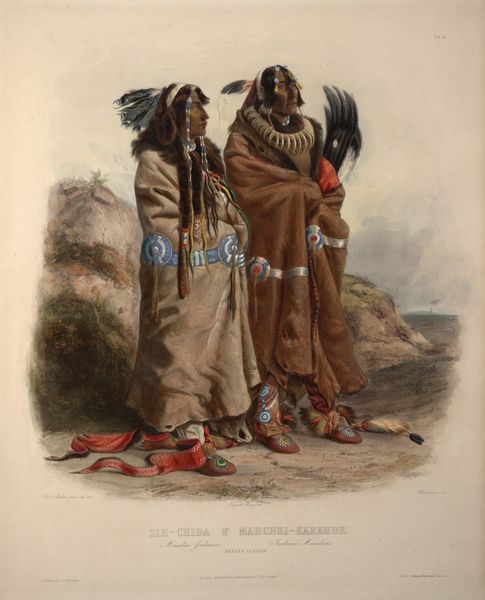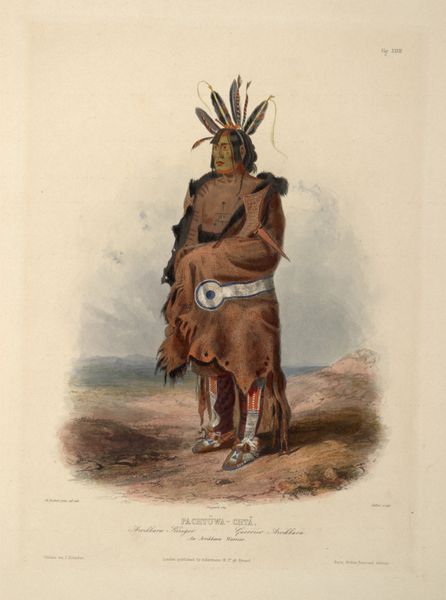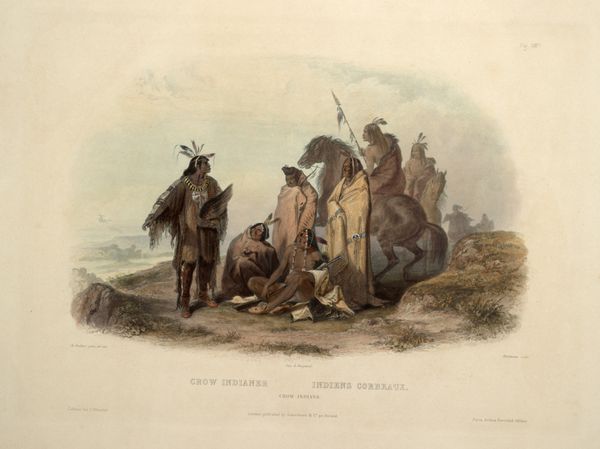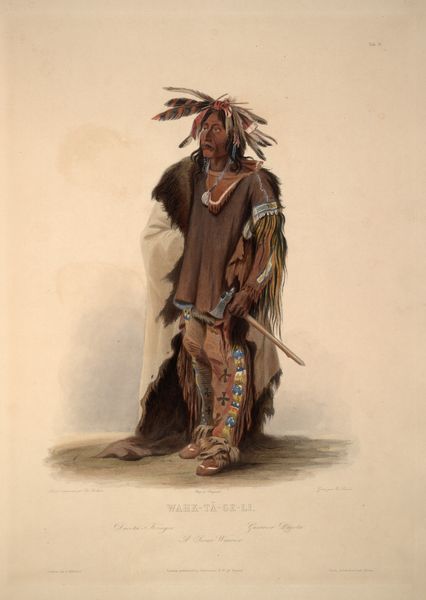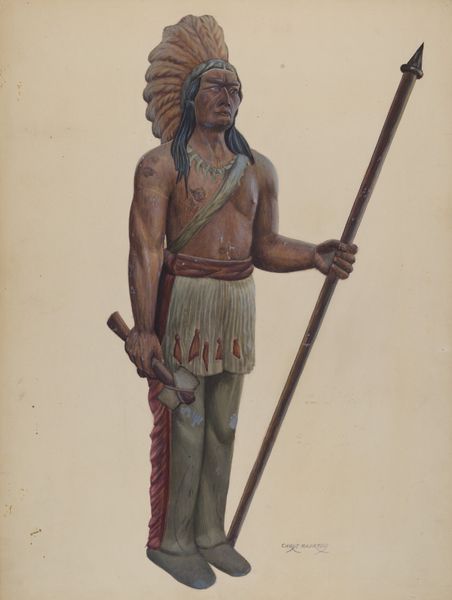
Abdih- Hiddisch. A Minatarre Chief, plate 24 from Volume 1 of 'Travels in the Interior of North America' 1834
0:00
0:00
#
portrait
#
watercolour illustration
#
watercolor
Copyright: Public domain
Curator: Looking at this striking watercolor from 1834 by Karl Bodmer, titled "Abdih-Hiddisch. A Minatarre Chief," I’m immediately drawn to the texture – the fur, the intricate beadwork – it practically invites tactile exploration. Editor: The imposing figure in the artwork instantly resonates with authority. What powerful symbolism underlies Abdih-Hiddisch’s regalia? Curator: Consider the sourcing and artistry evident in his clothing: the tanning of the hides, the intricate beadwork… these were intensely skilled labor practices. Editor: The feathered headdress, the meticulously rendered tattoos… these all must carry specific meanings within the Minatarre culture. I am so intrigued by the patterns inked on his arms. Each of these shapes must encode some story. Curator: Absolutely, but also note the raw materials: What was accessible for dyes, for tanning agents? Trade routes would have played a crucial role in what was used here and informs much about that culture. Editor: The inclusion of the tomahawk feels less about violence and more about position. This object can cut, create and defend, thereby underscoring a balanced approach to authority and diplomacy. Curator: I agree. It makes you think about access to trade as an influence. Was the metal of that tomahawk sourced locally, or was it bartered? Each tells a vastly different story about interconnectedness at this moment in time. Editor: It gives us much food for thought – to consider how we continue to create visual vocabularies that bridge the earthly with the spiritual. Curator: A deep dive into trade and materiality provides a crucial lens for interpreting this moment and a culture’s visual language.
Comments
No comments
Be the first to comment and join the conversation on the ultimate creative platform.


